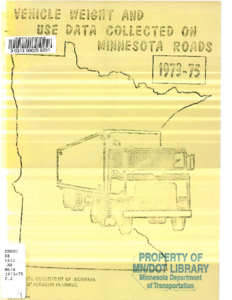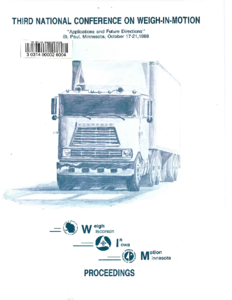Displaying results 21 - 30 of 30
Weigh-in-Motion Sensor and Controller Operation and Performance Comparison
Creator
Date Created
2018
Report Number
2018-03
Description
Minnesota's Relevant Evidence Law
Date Created
1983-06
Description
Third National Conference on Weigh-in-Motion: Proceedings
Creator
Date Created
1989-03
Description










